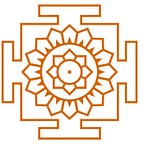From Ancient to Modern: The Evolution of Indian Culture Paintings
India is known for its rich cultural heritage, and one of the most important components of this heritage is its art. Indian cultural paintings depict the country’s rich cultural, religious, and historical traditions. The art of painting in India has evolved significantly over the years, reflecting the influences of many rulers, religions, and cultural movements. This article examines the evolution of Indian cultural paintings from ancient times to the modern era.
I. Ancient Indian Culture Paintings
A. Prehistoric Art
B. Indus Valley Civilization Art
C. Buddhist Art
D. Jain Art
E. Hindu Art
India has a rich tradition of painting dating back to prehistoric times. The earliest paintings found in India are from the Stone Age, which was discovered in caves. The prehistoric art of India includes cave paintings, rock paintings, and petroglyphs. The Indus Valley Civilization, which existed from 2600 BC to 1900 BC, is another significant period in Indian art history. The art of the Indus Valley Civilization is characterized by its geometric patterns, animal motifs, and human figurines. During the Buddhist and Jain periods, art in India focused on religious themes, and these religions had a significant impact on the development of Indian art. Hindu art, which emerged later, included a diverse range of styles, including the classical, medieval, and modern periods.
II. Medieval Indian Culture Paintings
A. Mughal Paintings
B. Rajasthani Paintings
C. Pahari Paintings
D. Deccan Paintings
Various schools of art emerged in India during the medieval period, each with its own distinct style and technique. The Mughal school of painting was one of the most influential schools during this time period, distinguished by its use of Persian and Indian forms. Rajasthani paintings, which originated in Rajasthan, centered on topics such as love, religion, and nature. The Pahari school of painting, which evolved in the Himalayan areas, is notable for its vibrant colors and detailed craftsmanship. The Deccan style of painting, which arose in southern India, is distinguished by its fine details and use of vivid colors.
III. Modern Indian Culture Paintings
A. Bengal School of Art
B. Progressive Artists’ Group
C. Contemporary Indian Art
The Bengal School of Art emerged in the early twentieth century, kicking off the modern era in Indian art. This school of painting emphasized the use of Indian themes and techniques while rejecting the Western styles that were popular at the time. The Progressive Artists’ Group, founded in 1947, emphasized the use of abstract and modernist trends in Indian art. Contemporary Indian art is distinguished by its many styles and themes, which reflect the country’s changing social and cultural landscape.
Conclusion
Indian culture paintings have evolved significantly over time to depict the country’s unique cultural and historical traditions. From prehistoric times to the current period, different rulers, religions, and cultural movements have affected Indian art. Today, Indian art evolves and reflects the country’s changing social and cultural landscape.
